EASTON, PA — The design process is underway for a 2021 project that will rehabilitate the historic Northampton Street Toll-Supported Bridge (“the free bridge”) between Easton, PA. and Phillipsburg, NJ, the Delaware River Joint Toll Bridge Commission (DRJTBC) announced today.
Engineers from the project’s design consulting firm – GPI/Greenman Pederson, Inc. of Lebanon, N.J. — are initiating bridge inspections this week. This first-step process will confirm and assess the breadth of structural deficiencies that are expected to need attention in a rehabilitation project. (Note: The inspections are not expected to impact motorists, but one of the bridge’s two walkways could be closed for brief periods when engineers are conducting their work.)
Currently, these are the major issues that are expected to be addressed during the 2021 project:
- Strengthen floor beams (steel members below the bridge’s road deck)
- Repair/replace buckling steel eye-bar components on the center portion of the bridge, the section that was reconstructed after the 1955 river flood
- Replace the bridge’s two deteriorating fiberglass walkway surfaces
- Outfit the bridge with a new architectural-lighting system
- Repair deteriorating masonry at the bridge’s abutments and wingwalls
- Repaint the bridge
Design engineers are assessing the severity of these individual bridge concerns to determine the course of action that would best address each issue. Designers then will develop drawings, list structural details, compile construction specifications and map traffic-control plans, sequencing the project’s tasks in a manner that mitigates impacts to motorists, pedestrians and the bridge’s two host communities.
The GPI was tasked with this work under a contract awarded at the Commission’s April meeting for a not-to-exceed amount of $1,420,768.65.
The design work is expected to wrap up toward the end of this year. At that point, the Commission should be in a position to put the project out to bid to contractors. The current schedule is to award the construction contract in early 2021. This would allow construction to begin sometime in the early spring of next year and reach completion during late 2021 or early 2022.
Under the projected schedule, the bridge would undergo rehabilitation during the bridge’s 100th anniversary of being converted from a private tolled crossing to a publicly owned “free” crossing. New Jersey and Pennsylvania jointly purchased the bridge from the former Easton Delaware Bridge Co. for $300,000 on Aug. 3, 1921. The purchase was facilitated by the former so-called Joint Commission for Elimination of Toll Bridges – Pennsylvania-New Jersey, the predecessor body to the DRJTBC. The bridge was operated and maintained with annual matching tax subsidies from the two states. The transfer conformed with changes the states made to Commission’s bi-state compact between 1984 and 1987.
The Northampton Street Bridge is the second oldest vehicular bridge between Pennsylvania and New Jersey. It opened to traffic in early 1896. Its steel cantilevered truss design has the appearance of an eye-bar suspension bridge. Only one other bridge in the world has similar characteristics – the Liberty Bridge along the Danube River in Budapest, Hungary. Largely because of its unique engineering and design, the Northampton Street Bridge is revered by bridge historians and engineers. For example, the online bridge history site – www.historicbridges.org – gives the structure a 10 rating on a scale of 10. Plaques affixed to the bridge’s truss affirm its status as a National Historic Civil Engineering Landmark by the American Society of Civil Engineers.
The bridge was designed by James Madison Porter 3rd, a prominent engineer who led the civil engineering department at Lafayette College for decades. Porter was the son of one of the college’s founders.
The bridge replaced a wooden covered bridge that served the Easton-Phillipsburg area for 89 years. That bridge was the second bridge to span the Delaware. It was owned and operated by the Easton Delaware Bridge Company, which raised construction capital through sales of stock and, to a lesser degree, regional lotteries. The shareholder-owned company opened the bridge for use and collection of tolls on October 14, 1806. The bridge was designed by Timothy Palmer of Newburyport, MA., who is widely regarded as one of America’s foremost early 19th century wooden bridge designers.
Because of the old wooden bridge’s logistical and economic importance when the need arose to replace it in the early 1890s, Professor Porter staged the erection of his steel replacement bridge in a manner that literally engulfed the old structure’s wooden cartway so that it could continue in service between the two communities through much of construction. At the time, traffic was largely horse-drawn. Under the construction contract with the Union Bridge Co., trolley service also was maintained.
While the steel bridge is colloquially referred to nowadays as “the free bridge,” the former Easton Delaware Bridge Company operated it as a tolled crossing for its first 25 years. All totaled the river crossing has had toll for a longer period than without one – 115 years, 1806 to 1921 with a toll; and 99 years, 1921 to 2020 without a toll.
Over the decades, Porter’s steel bridge has been rehabilitated and repaired multiple times. After the historic 1955 river flood destroyed the bridge’s center span, the missing section was replaced two years later.
The bridge’s last rehabilitation occurred in 2001. That project involved repair and replacement of some structural steel components, removal of lead paint and repainting, replacement of sidewalk decking, and installation of new pedestrian railings.
